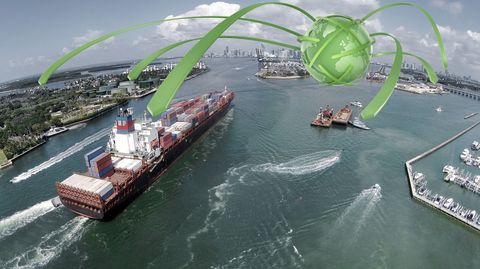As the global market for IT products grows ever more important, business groups worldwide have been exploring ways of making the international trade of these wares more competitive.
One of the most important developments in the evolution of this market in the last couple of decades has been the Information Technology Agreement (ITA), a landmark deal originally put in place by the World Trade Organization (WTO) in 1996. Eliminating import duties on numerous IT products, the deal has unlocked numerous benefits for companies worldwide.
In the coming months, the ITA is set to be broadened once again, with hundreds of additional products set to come under the remit of the agreement for the first time. As such, the move is set to represent another considerable step forward for the future development of one of the world's most forward-looking and commercially vital industries.
The details
The original ITA was signed in December 1996 at the first ever WTO Ministerial Conference in Singapore. Marking the first and most significant tariff liberalization arrangement negotiated in the WTO after its establishment in 1995, the deal removed import duties on a wide range of products, including computers, telecommunication equipment, semiconductors, semiconductor manufacturing and testing equipment, software and scientific instruments, as well as most of the parts and accessories for these items.
Since the signing of the ITA, the IT sector has become one of the fastest growing sectors in world trade, with the products covered by the deal accounting for an estimated $1.6 trillion (€1.46 trillion) - almost three times as much as when the ITA was first signed.
Although support for the agreement has risen from 29 WTO members in 1996 to 81 today, the actual scope of the ITA was not updated until a fresh deal was reached at the Nairobi Ministerial Conference in December 2015, with more than 50 members backing the revision. Following the change, an additional 201 products will be covered by the ITA, including next-generation semiconductors, GPS navigation systems, medical products including magnetic resonance imaging machines, machine tools for manufacturing printed circuits, telecommunications satellites and touchscreens.
Moreover, the deal contains a commitment to tackling non-tariff barriers in the IT sector, and to keep the list of products covered under review to determine whether further expansion may be needed to reflect ongoing technological development.
The benefits
The ITA expansion agreement is the first major tariff-cutting deal at the WTO in 19 years, with the 201 products covered by the revised deal valued at more than $1.3 trillion per year, or approximately ten per cent of total global trade.
All 162 WTO members will benefit from the agreement, giving companies in these countries duty-free market access to the markets of the members signed up to eliminate tariffs on these products. This will help to reduce prices across multiple sectors, lowering costs for downstream manufacturing and services industries that rely on information and communications technology parts and components as inputs and thereby enhancing their competitiveness. Over time, this will serve to help create new jobs and bolster GDP growth on a global basis.
The US is one of the members involved in implementing the deal and has welcomed the agreement as a positive development. US trade representative Michael Froman said: "US exporters of state-of-the-art information and communication technology products will realize the benefits of expanding the ITA on billions of dollars in American technology exports all around the globe.
"This demonstrates that the WTO can deliver real, commercially significant results. We urge all ITA expansion parties to proceed promptly with their domestic implementation."
The progress so far
The process of implementing the new-look ITA began in earnest on July 1st, with 65 per cent of tariff lines having been fully eliminated on this date. Most of the remaining charges will be completely phased out in four stages over three years, meaning almost all imports of the relevant products will be duty-free by 2019.
Although the WTO members that took part in the negotiations for the deal account for approximately 90 per cent of global trade for the relevant products, but the agreement remains open for any other members that wish to join, meaning its benefits could become even more widespread over time.
With developed and developing nations both voicing their support for the deal, the revised ITA could therefore be set to act as a major driver of growth in the IT sector and beyond for many years to come.






